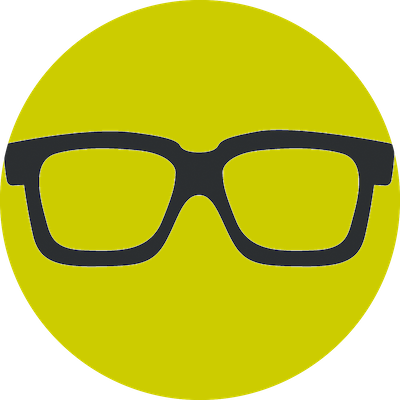Tens of thousands of busy people start their day with their personalized digest by Refind. Sign up for free and pick your favorite topics and thought leaders. Subscribe here.
466: quantum of sollazzo
#466: quantum of sollazzo – 3 May 2022
The data newsletter by @puntofisso.

Hello, regular readers and welcome new ones :) This is Quantum of Sollazzo, the newsletter about all things data. I am Giuseppe Sollazzo, or @puntofisso. I’ve been sending this newsletter since 2012 to be a summary of all the articles with or about data that captured my attention over the previous week. The newsletter is and will always (well, for as long as I can keep going!) be free, but you’re welcome to become a friend via the links below.
Every week I include a six-question interview with an inspiring data person. This week, I speak with Rosamund Pearce, Visual Data Journalist at The Economist. As readers of Quantum of Sollazzo, you’ve probably seen her contributions to The Economist’s Graphic Detail section linked here.
‘till next week,
Giuseppe @puntofisso
Six questions to...
Rosamund Pearce

I use R for data cleaning, analysis and visualisation, QGIS for maps, Adobe Illustrator for laying out and polishing up the design, and D3 for things I can’t do elsewhere (like force-directed graphs).
I’m also proud of the newsletter that the data team launched last year. I enjoy writing about data visualisation and having a dedicated newsletter gives me a space to get into the nitty-gritty of designing charts without worrying that the topic is too niche.
There are loads of little tricks in Adobe Illustrator that I wish I’d learned sooner. “Convert to shape” allows you to resize scatters without the circles distorting. The blend tool is useful for creating colour scales for maps. And if there isn’t a built-in way of doing something it’s worth checking to see if someone’s written a script for it.
|
Become a Friend of Quantum of Sollazzo → If you enjoy this newsletter, you can support it by becoming a GitHub Sponsor. Or you can Buy Me a Coffee. I'll send you an Open Data Rottweiler sticker. You're receiving this email because you subscribed to Quantum of Sollazzo, a weekly newsletter covering all things data, written by Giuseppe Sollazzo (@puntofisso). If you have a product or service to promote and want to support this newsletter, you can sponsor an issue. |
Topical
Can you reach net zero by 2050?
“See if you can save the planet from the worst effects of climate change.“
This climate-related game by the Financial Times is doing the rounds in the data journalism circles. The choice of advisers is straight from “Don’t look up”.

How many Ukrainian refugees are there in the European Union – and where?
Gianluca De Feo for OBC Transeuropa/EDJNet takes a look at Ukrainian refugee flows.

The Extreme Bias Of Florida’s New Congressional Map
FiveThirtyEight explains gerrymandering redistricting in Florida. That this degree of meddling with elections is legal and socially acceptable in the US never ceases to surprise me.

Tools & Tutorials
NYC 311 Reports
Chris Whong has launched a web app that “that lets you draw an area of interest in NYC and get a report of recent 311 activity.“
311 is the number used to report non-emergency issues in many US areas.

K-Nearest Neighbor (KNN) Explained
“One Machine Learning algorithm that relies on the concepts of proximity and similarity is K-Nearest Neighbor (KNN). KNN is a supervised learning algorithm capable of performing both classification and regression tasks.“
Latlon2map
The European Data Journalism Network has launched this handy web app. “Latlon2map is a tool developed by OBC Transeuropa’s Giorgio Comai that you may find useful if you have a spreadsheet with longitude and latitude columns and would like to have a look at those data on a map, or associate them with administrative units across Europe.“
This Medium post explains how it works.

Data thinking
‘I think I discovered a military base in the middle of the ocean’
Or, “Null Island, the most real of fictional places”.
A serious article. Here’s the abstract: “This paper explores Null Island, a fictional place located at 0∘ latitude and 0∘ longitude in the WGS84 geographic coordinate system. Null Island is erroneously associated with large amounts of geographic data in a wide variety of location-based services, place databases, social media and web-based maps. While it was originally considered a joke within the geospatial community, this article will demonstrate implications of its existence, both technological and social in nature, promoting Null Island as a fundamental issue of geographic information that requires more widespread awareness. The article summarizes error sources that lead to data being associated with Null Island. We identify four evolutionary phases which help explain how this fictional place evolved and established itself as an entity reaching beyond the geospatial profession to the point of being discovered by the visual arts and the general population. After providing an accurate account of data that can be found at (0, 0), geospatial, technological and social implications of Null Island are discussed. Guidelines to avoid misplacing data to Null Island are provided. Since data will likely continue to appear at this location, our contribution is aimed at both GIScientists and the general population to promote awareness of this error source.“
Dataviz, Data Analysis, & Interactive
Social Media Usage by Age
“Social media apps are on a lot of phones these days, but some tend towards a younger audience and others an older. Some are common across the population. Here’s the breakdown by age for American adults in 2021, based on data from Pew Research Center.“
Great work by Flowingdata.

2022 London Studio Pay Analysis
Kudos to ustwo for publishing a highly visual report on their London gender pay gap.
(Note that publishing the data is a legal requirement in the UK for companies with more than 250 employees, and voluntary for all others.)
Safe Cycling in London
A Google map by Safe Cycle London, via the excellent Mobility Matters Daily.

AI
Machine-learning models vulnerable to undetectable backdoors: new claim
“Boffins from UC Berkeley, MIT, and the Institute for Advanced Study in the United States have devised techniques to implant undetectable backdoors in machine learning (ML) models.“

quantum of sollazzo is supported by ProofRed’s excellent proofreading. If you need high-quality copy editing or proofreading, head to http://proofred.co.uk. Oh, they also make really good explainer videos.

Sponsors* casperdcl and iterative.ai Jeff Wilson Fay Simcock Naomi Penfold Steve Parks
[*] this is for all $5+/months Github sponsors. If you are one of those and don’t appear here, please e-mail me